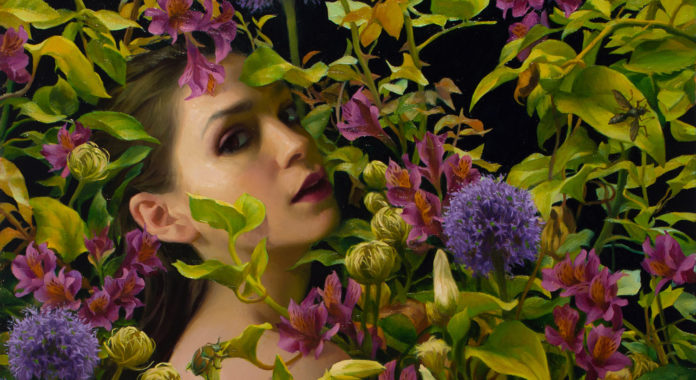How do you create a complex painting composition? Stein explains in this article: “It takes risk to turn a good painting into a great painting.”
Method of Metamorphosis
By Adrienne Stein
(www.adriennestein.com)
In my studio, I have found great joy in painting’s spontaneity — the possibility that a painting will take on a life of its own and evoke a dramatically different story than I originally intended. The work-in-progress on my easel no longer represents a step on a preplanned track, but an actively moving world, the surface of which is a theater of dynamic change and surprising evolution.
Like many contemporary realists, I studied the Old Masters in an atelier setting at a young age. In the years that followed I was blessed to study with a series of influential instructors who guided me through the diverse world of European Renaissance and nineteenth century painting techniques. That training was a great gift that reinforced a rigorous studio practice of working from direct observation of nature, faithfully rendering form, volume, value, texture, and color. All of these components bow to the greater, more elusive vehicle of painting: Composition. This is the topic I am exploring in my studio, and the topic I would like to explore in this article.
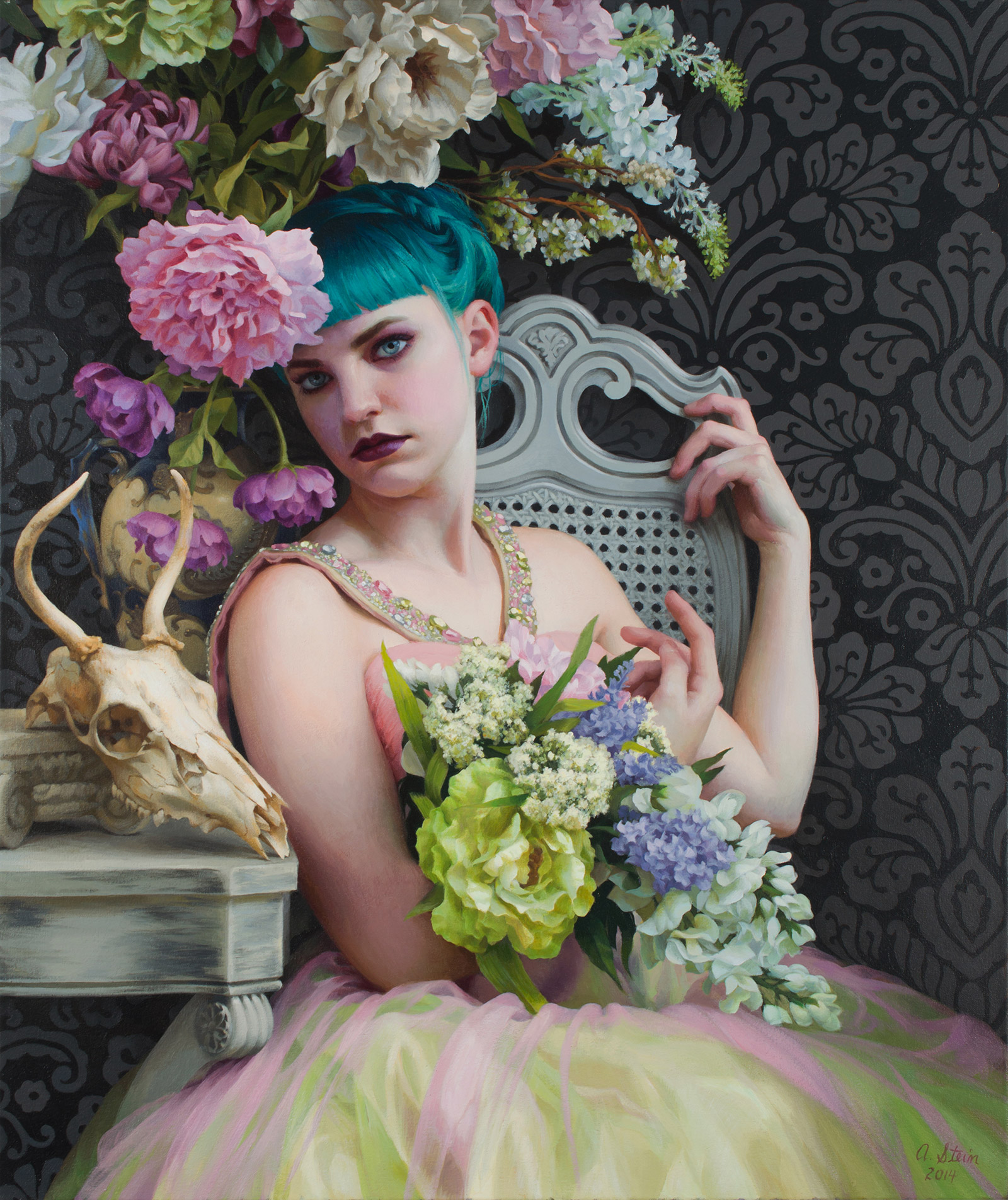
In the past, I have mistakenly viewed the compositions of my favorite masters as products of a linear process, crafted without deviation from the initial drawing to the final brush stroke. For the most part, my process has always been that straightforward: envisioning the composition, making a drawing, gathering references, and executing the work accordingly.
I imagined it was also the same with the contemporary realists whom I admired. Recently I read an interview with the great Vincent Desiderio in which he claimed that he often paints entire figures into and out of a painting before arriving at the final composition. I was struck by the courage it must take to scrap weeks, even months of work in order to serve the grand scheme. Thus, I began investigating this notion of pentimenti trace remains of passages visible underneath subsequent paint layers.
Caravaggio, Rembrandt, and Titian notoriously skipped preparatory drawings, preferring to work directly on the canvas, making sweeping alterations in the process. Even Ingres, who would make numerous painstaking preparatory drawings, often made dramatic changes to his compositions during the course of a painting. Modern X-ray technology now offers us a forensic glimpse of these pentimenti in the works of the Masters. Here we see their minds, their problem solving, and the life cycle of a painting.
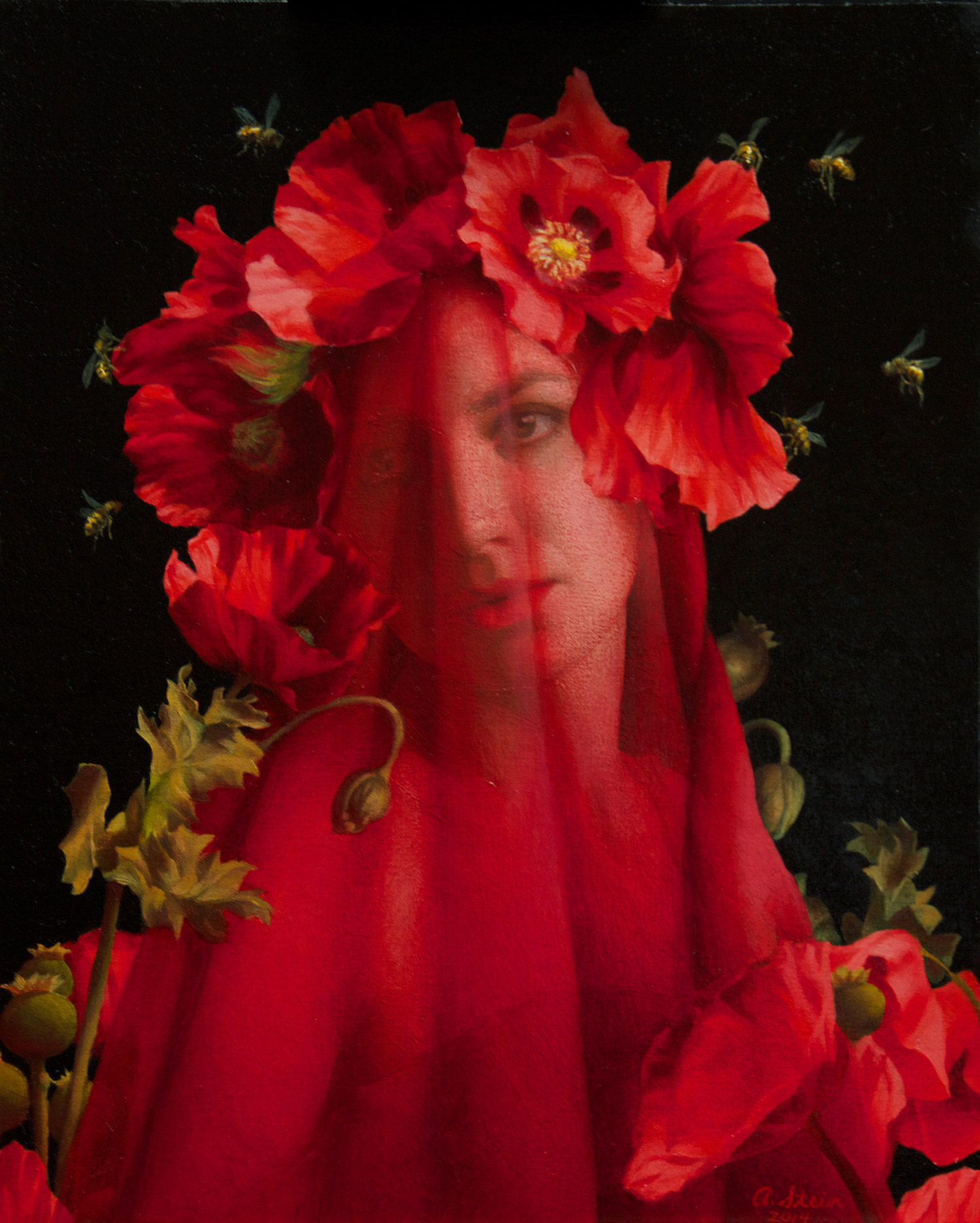
In the painting “Thaw” (below), I began with a simple premise: my sister wandering entangled in this vivid autumnal landscape near my home in Pennsylvania. I prepared the composition after shooting reference photos, and then systematically laid in the drawing, underpainting, and flesh tones, before I realized that I wanted a more dynamic composition. She felt static and rigid. So, I set to re-posing the figure and painting directly over the old one. The arched/twisting pose gave me the expressive “whirling” effect I was seeking.
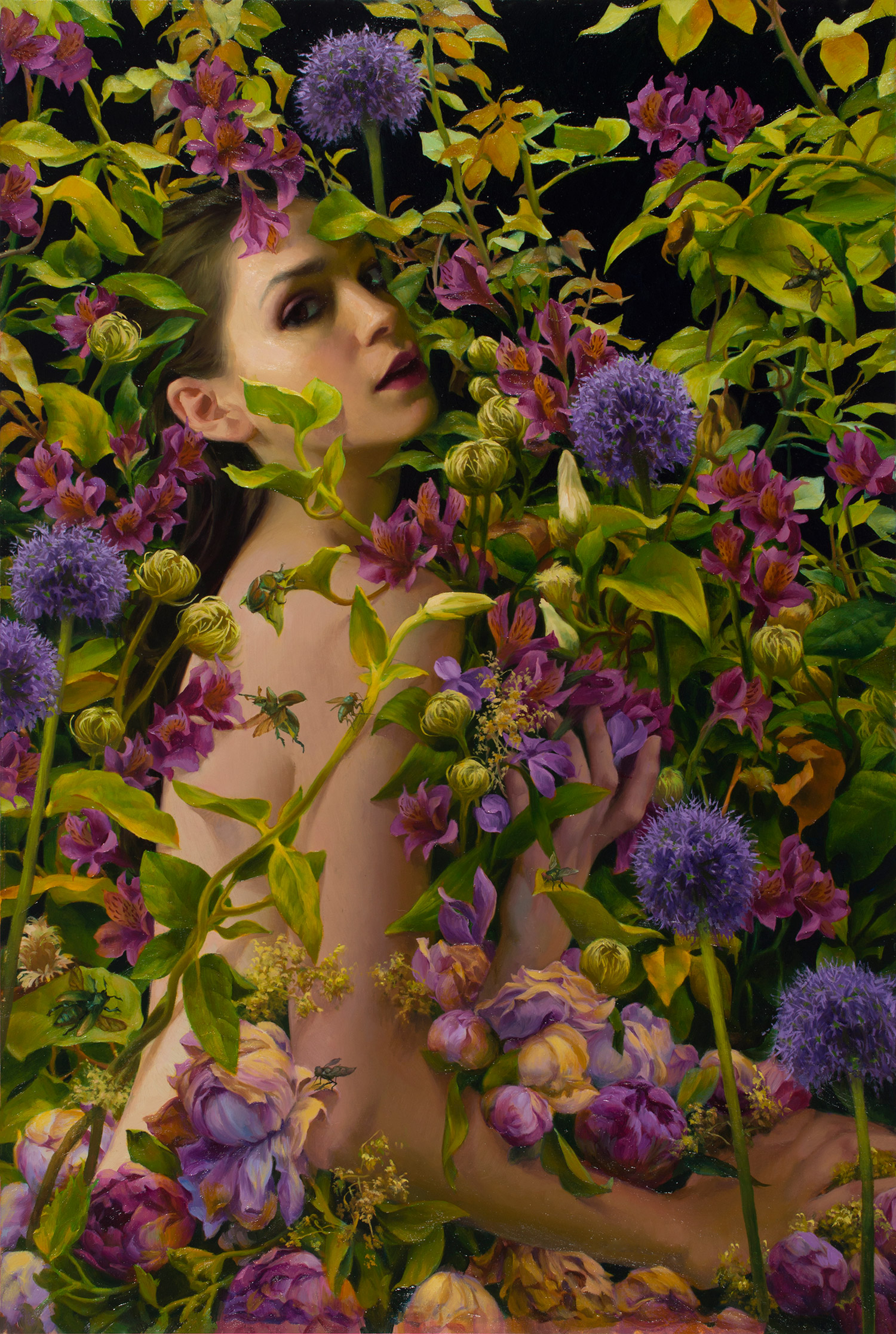
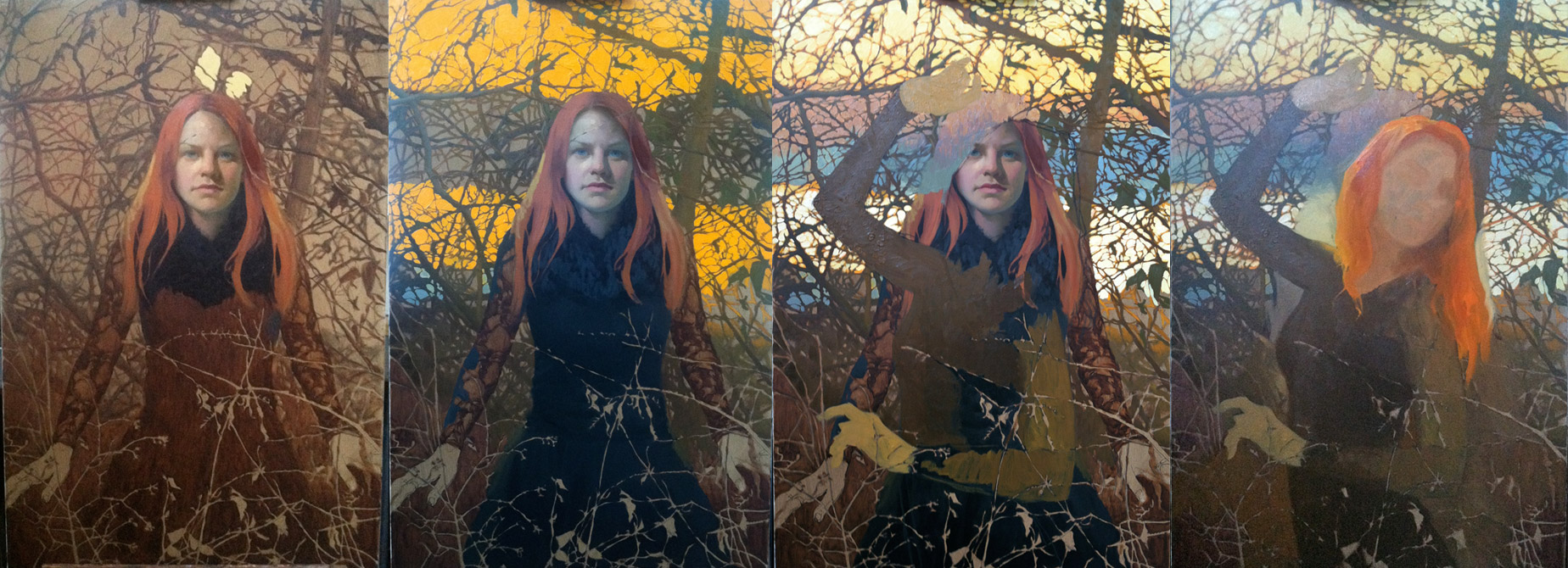
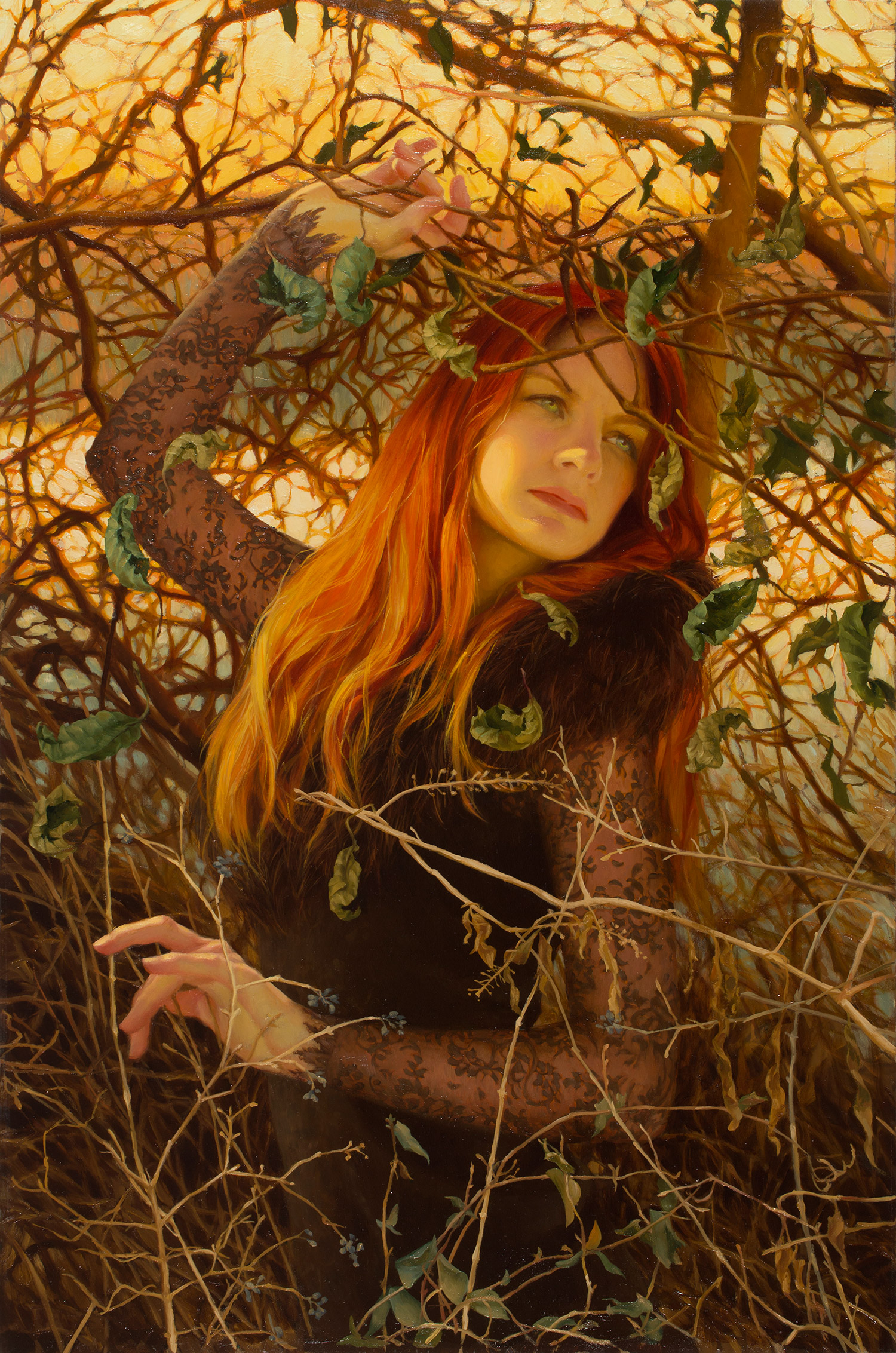

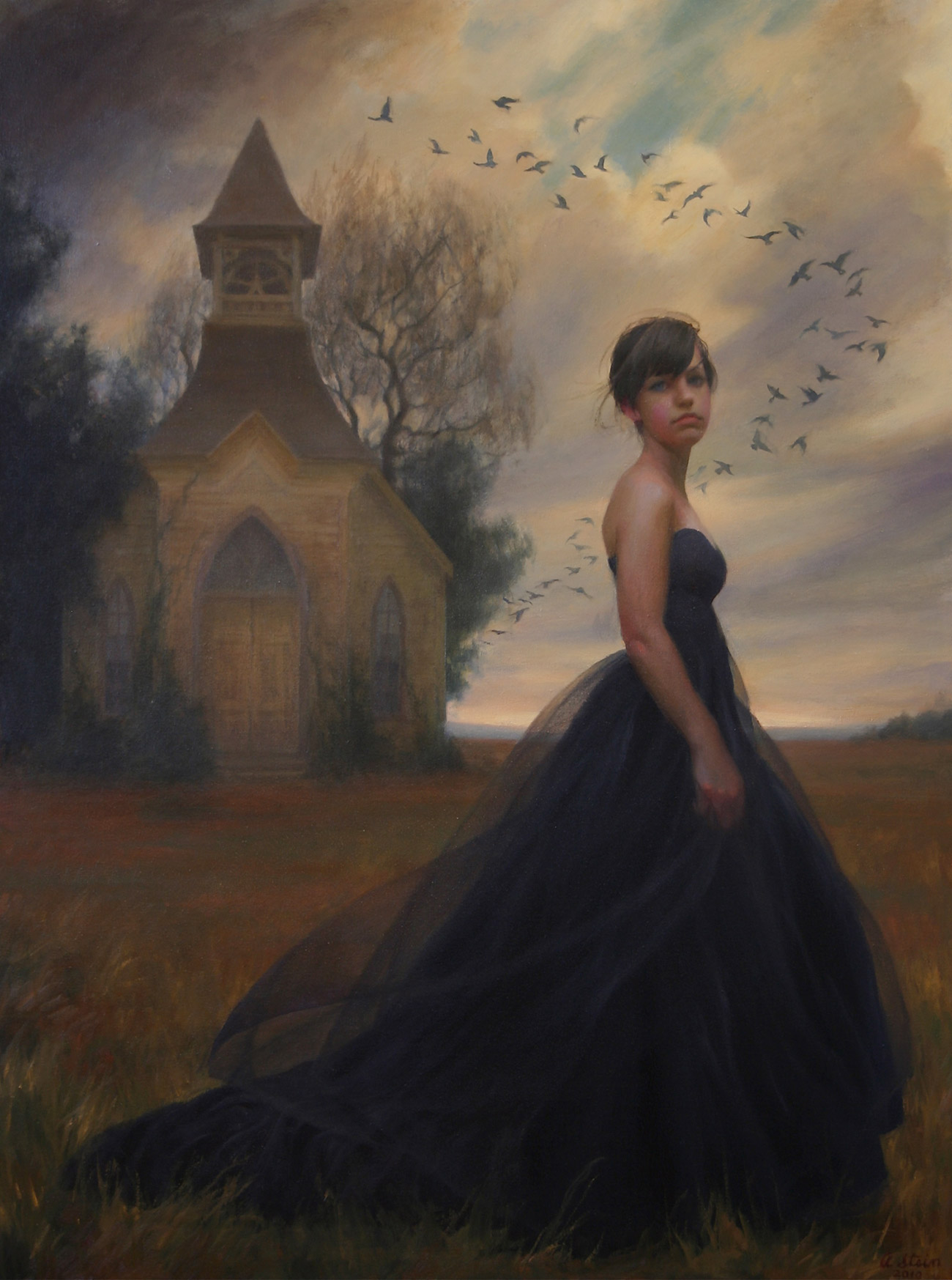
A few years ago, I have begun to work almost exclusively with Golden Open Acrylics. They are pre-mixed with a retarder, which allows me to paint wet into wet longer than standard acrylic paint. Fortunately, they dry fast enough to allow me to glaze passages in the same day. Since I prefer painting indirectly, this medium is ideal. It has revolutionized my painting process by allowing me to paint over passages easily, and to quickly build up scumbles and glazes without waiting a long dry time.
Related Article > A Glazing Experiment with Quang Ho
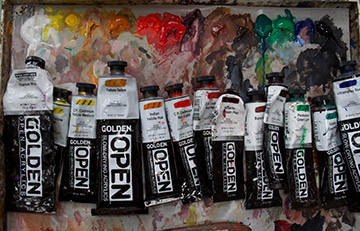
I am currently working on a series of emotionally charged Baroque-inspired portraits of my friends and family members. These portraits incorporate lush, detailed still life and botanical elements as well as ornate wallpaper.
It takes risk to turn a good painting into a great painting. I have discovered that a great painting is often an archeological terrain with hidden layers of past lives buried beneath its surface.
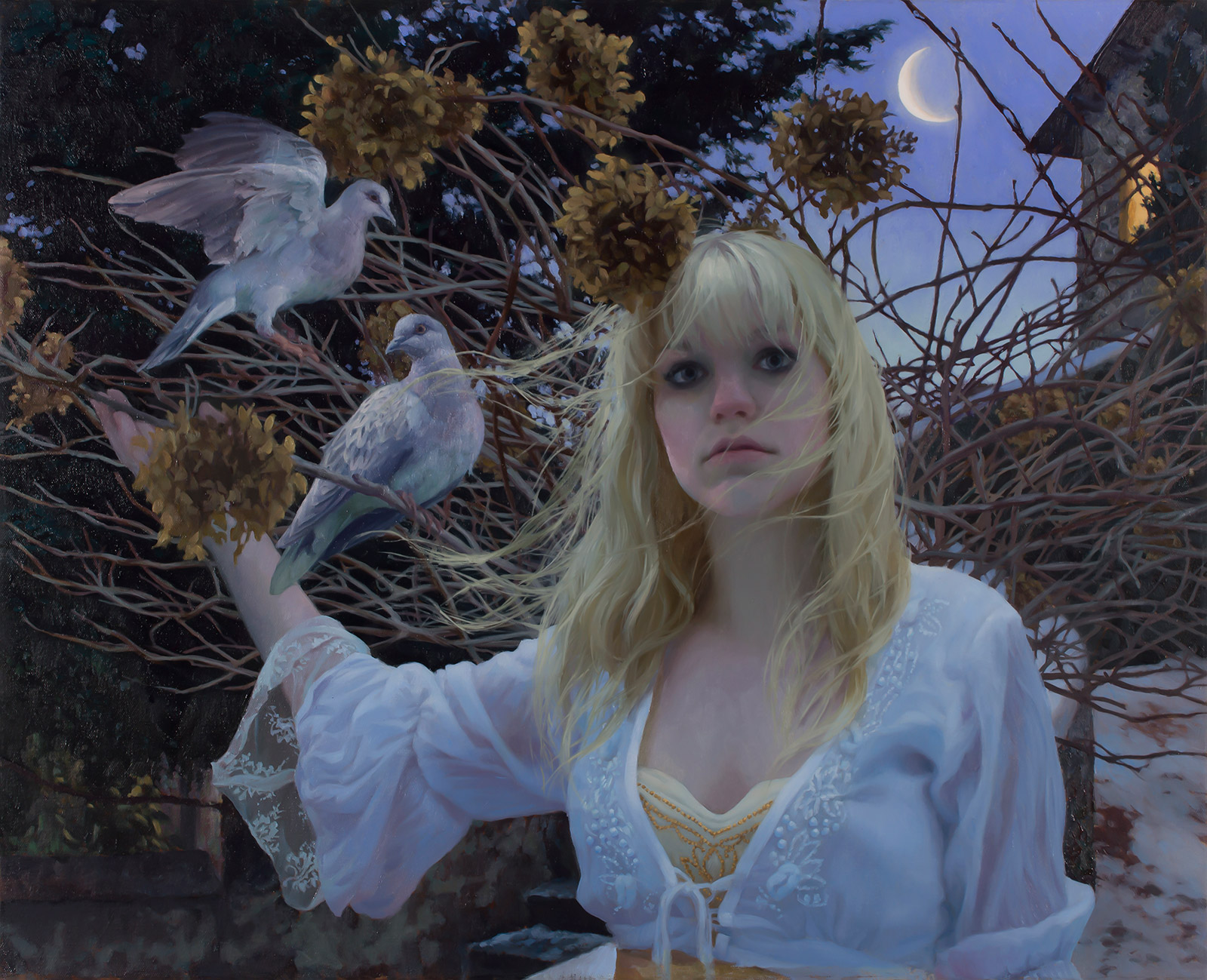
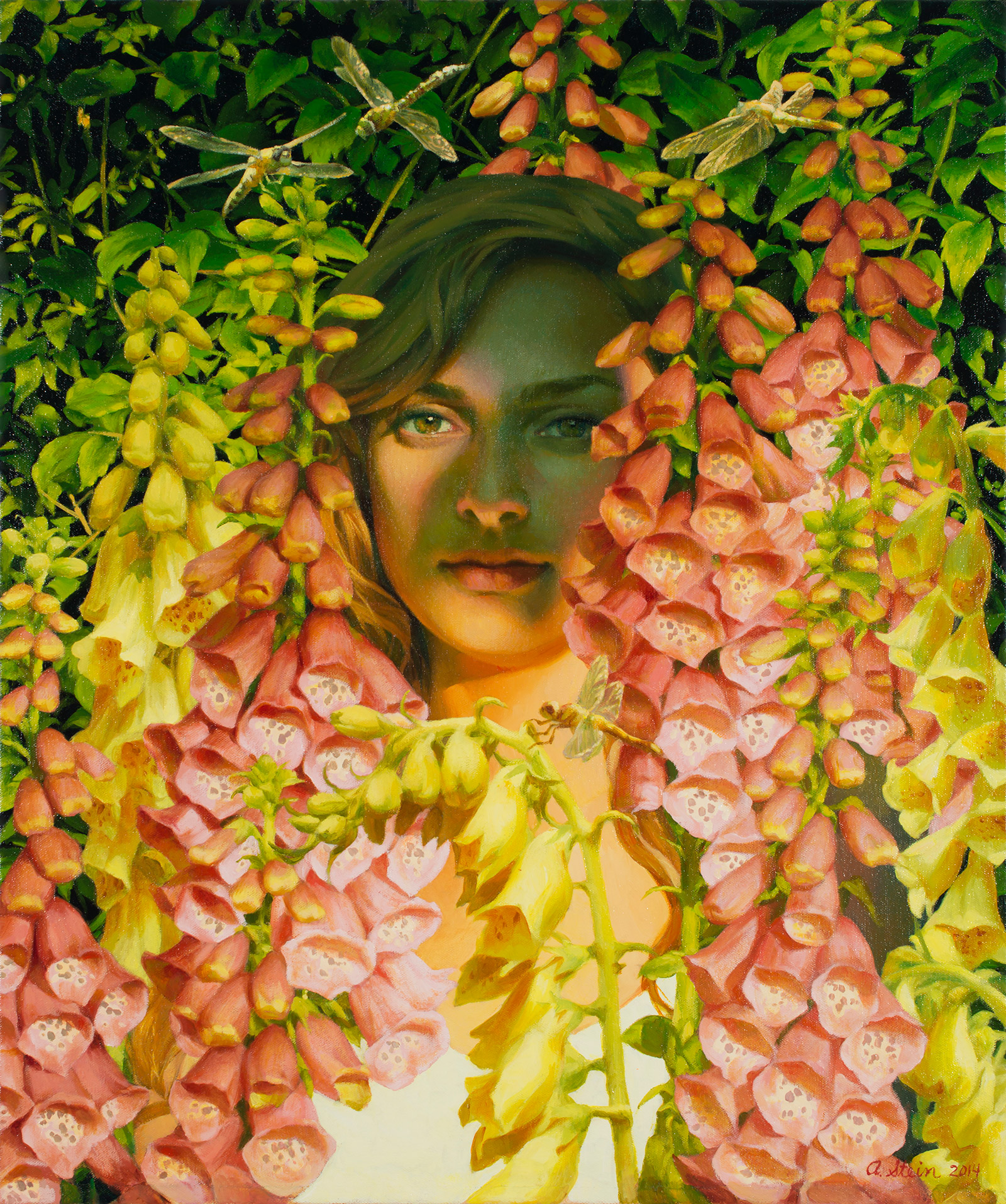
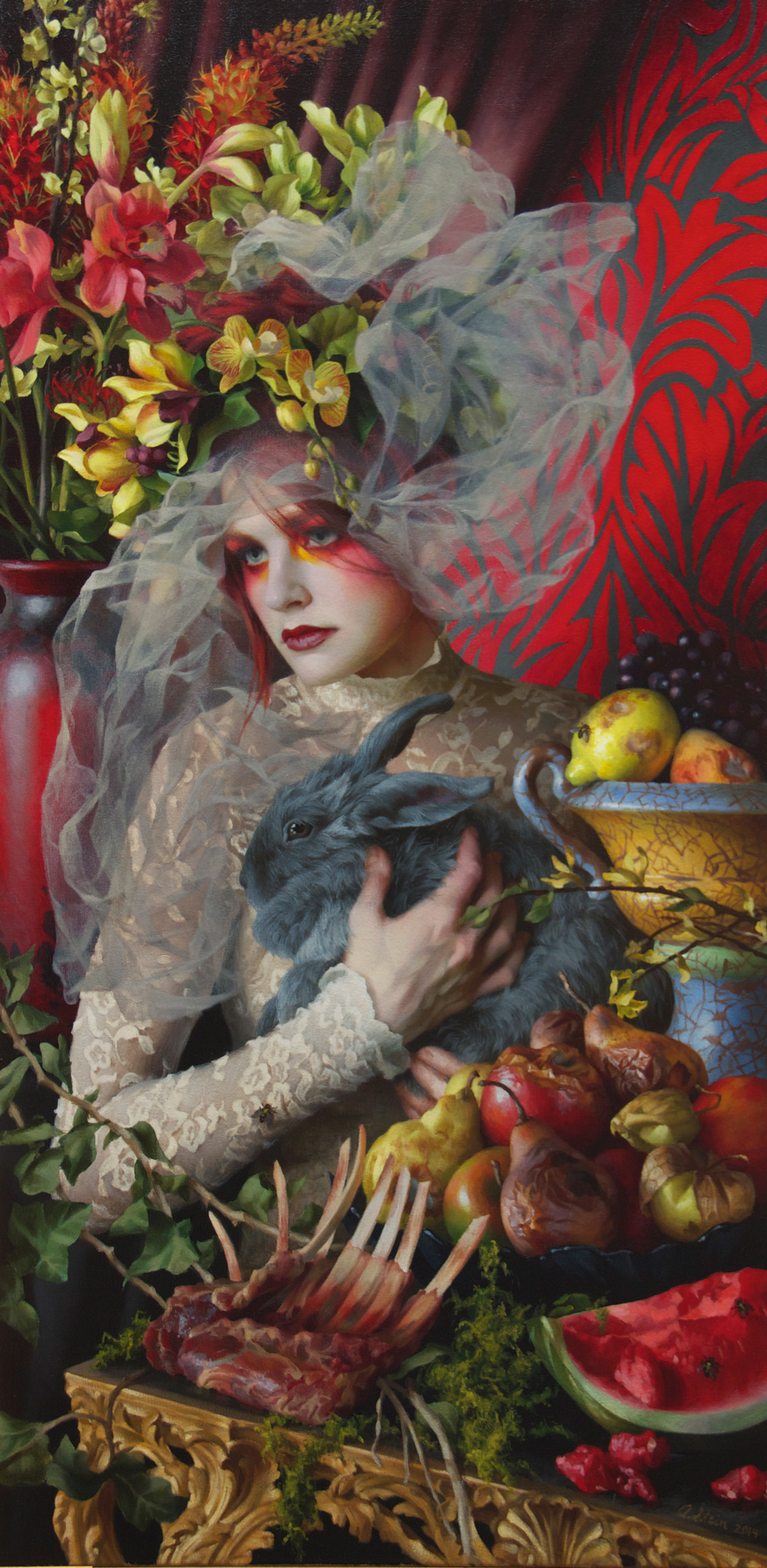
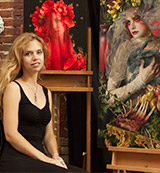
About Contemporary Realist Adrienne Stein:
Adrienne Stein is an award winning artist living and working in Pennsylvania. She holds an MFA from Boston University and a BFA Magna Cum Laude, from Laguna College of Art & Design. Adrienne studied under many gifted and influential instructors throughout the United States, France, and Italy. Her work reanimates historical painting genres forming a bridge to the present with fresh insight and imagery. The worlds she paints are inhabited by figures, folklore, archetypes, and natural elements that are fueled by a sense of personal as well as universal myth. Close friends and family members are reinterpreted in lush and magical environments that form the nexus between reality and fantasy, expressed through an unconscious world of symbolic imagery. She has received numerous awards from organizations such as The Portrait Society of America, The Elizabeth Greenshields Foundation, and The Art Renewal Center. Her work is collected in the U.S. and abroad. She has been on the faculty for the Annual Figurative Art Convention & Expo and RealismLive.
This article was originally published in 2019
> Visit EricRhoads.com (Publisher of Realism Today) to learn about opportunities for artists and art collectors, including:
- Art retreats
- International art trips
- Art conventions
- Art workshops (in person and online)
- And more!


